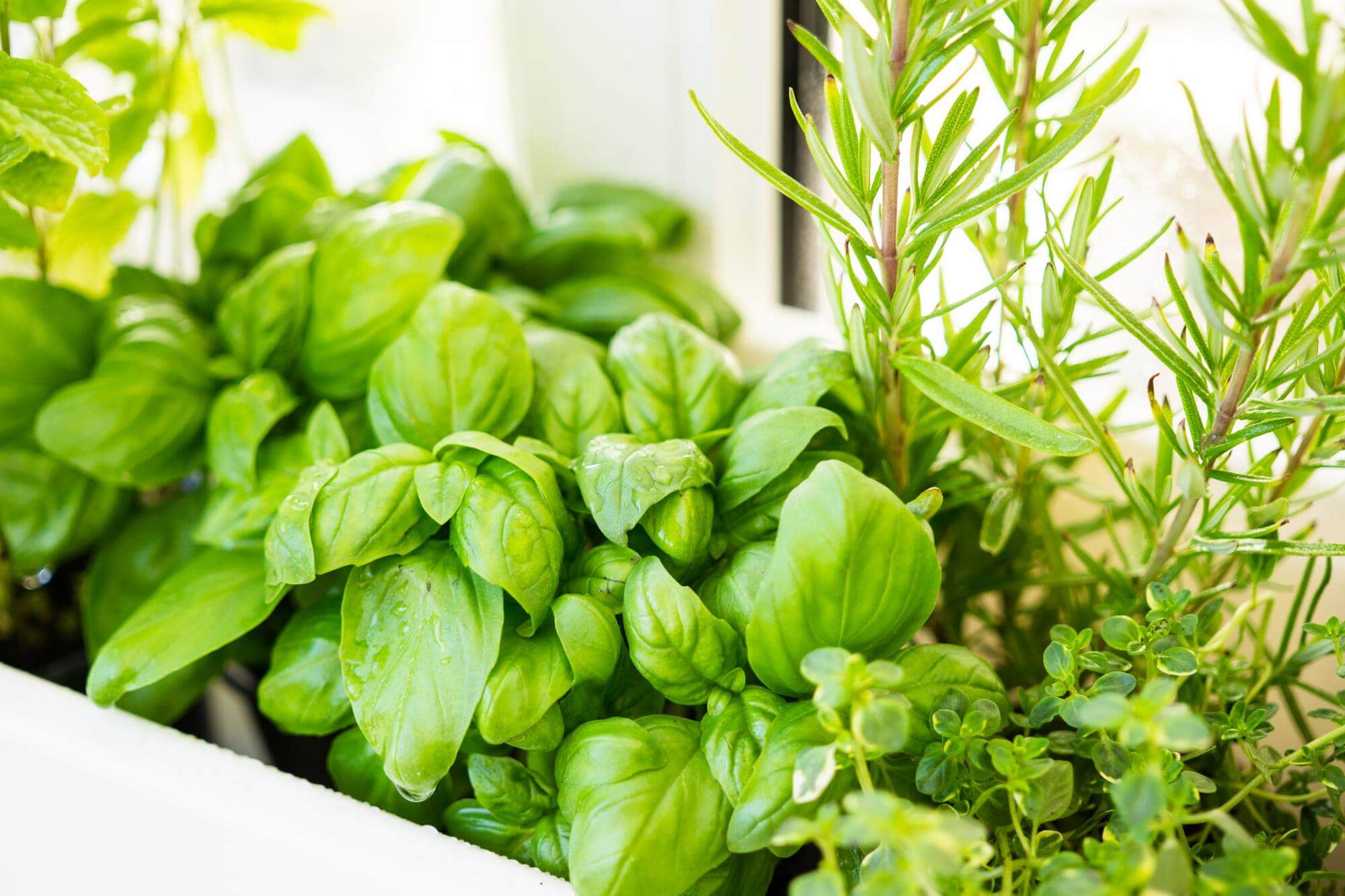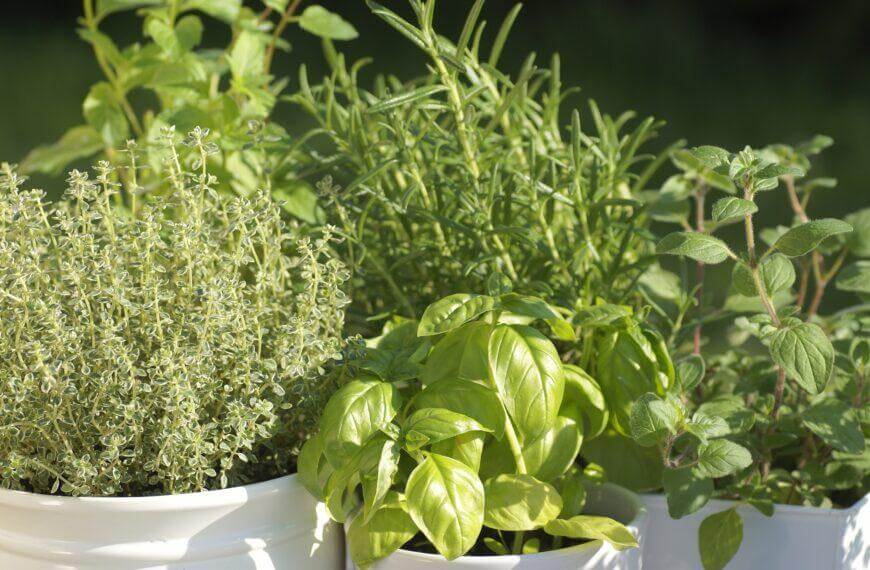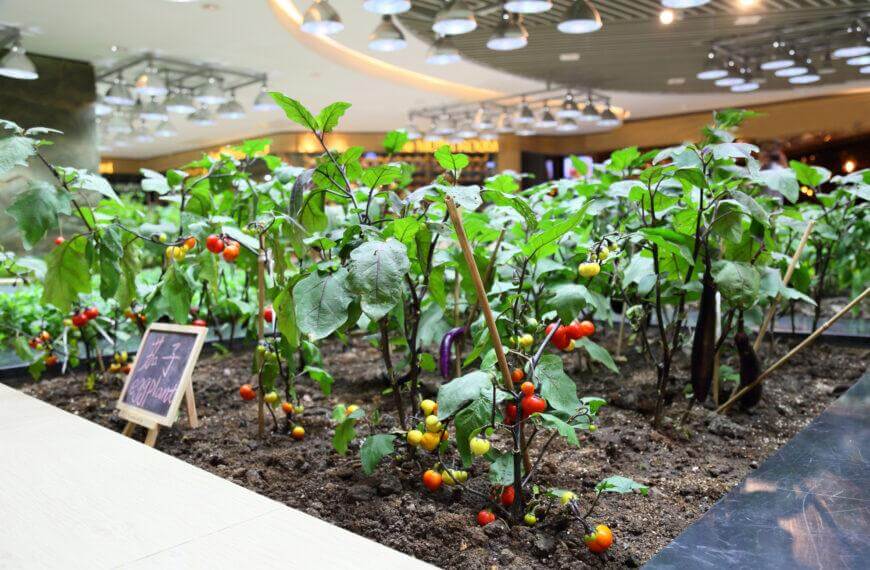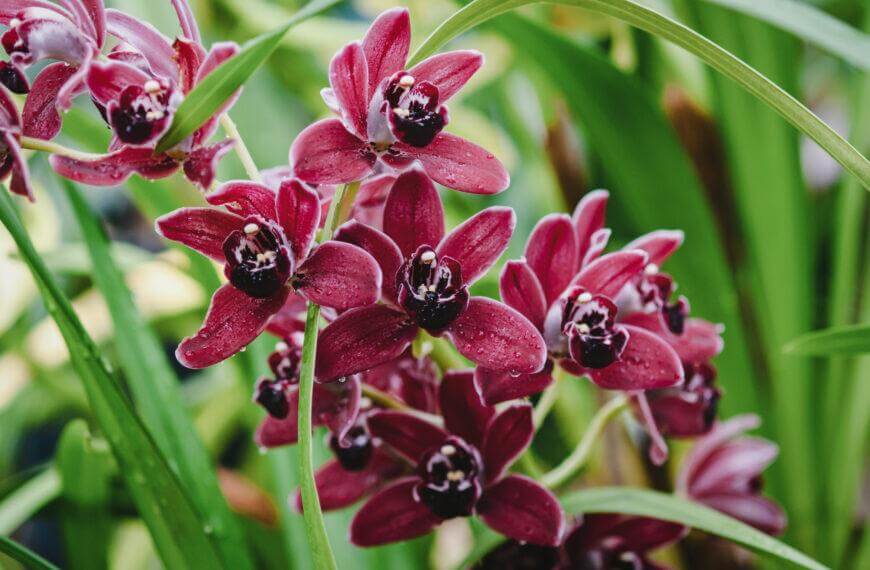Key Takeaway:
- Indoor herb gardens provide numerous benefits, including easy access to fresh herbs, the ability to control growing conditions, and space-saving convenience.
- Choose the right plants for your indoor herb garden by selecting herbs that are well-suited for indoor growing conditions, such as basil, cilantro, and chives. Starting with seedlings can help ensure the success of your plants.
- Select the right container for your herb garden, with proper drainage being a key consideration. You can also get creative with container options, such as repurposing household items, as long as they provide adequate drainage.
- Ensure your herbs receive proper lighting, including maximizing exposure to natural light and supplementing with grow lights as needed to promote healthy growth and flavor.
- Maintain consistent soil moisture and use proper techniques for harvesting your herbs, such as pinching off leaves at the stem. When transplanting or renewing your indoor herb garden, consider the timing and outdoor growing season as well as your space and style preferences.
Want to grow herbs? Not sure where to begin? Indoor herb gardens are fun and rewarding! Plus, you get to enjoy organic herbs from the comfort of home! Need help starting? Here’s the ultimate guide! Learn how to make the most of your herb garden today!
Introduction: Benefits of Growing Herbs Indoors
Growing herbs indoors can offer numerous benefits. Firstly, it provides a fresh supply of herbs all year round, which can be used in cooking or for medicinal purposes. Secondly, indoor herbs help purify the air and add greenery to your home decor. Thirdly, it saves money and time as you don’t have to go out to buy herbs every time you need them.
- Indoor herb gardens require less space and can be grown in containers.
- You can control the amount of light, water, and nutrients the herbs receive.
- By growing herbs indoors, you can avoid pests, diseases, and harsh weather conditions that can damage outdoor plants.
If you’re new to herb gardening, you might not know which herbs are best to grow indoors, how to choose the right container, or why drainage is important. It’s suggested to start with easy-to-grow herbs like basil, parsley, mint, or thyme.
To ensure your indoor herb garden thrives, consider using a well-draining soil mix, positioning the container near a sunny window or grow light, and watering the herbs regularly but not too much. Additionally, pruning the herbs regularly can prevent leggy growth and promote bushier plants.
Incorporating unique indoor herb garden ideas such as a chalkboard wall planter, a vintage milk crate herb garden, or a macrame hanging herb garden can add an aesthetic appeal to your living space. By following these suggestions, you can create a healthy and thriving indoor herb garden that adds flavor and greenery to your home.
Selecting the Right Plants for Your Indoor Herb Garden
Plant Selection for Indoor Herb Gardens
Growing herbs indoors can be a great way to have readily available fresh herbs no matter the season. Here’s what you need to know about selecting the right plants for your indoor herb garden:
- Choose herbs you love to cook with or that have health benefits
- Consider how much light your space receives – certain herbs require more sunlight than others
- Choose plants that fit your space – for example, small herb planters are great for petite kitchens
- Think about whether you want annuals or perennials
It’s important to note that some herbs are more challenging to grow indoors than others. However, with patience and attention to detail (such as selecting the right soil and maintaining proper moisture levels), you can successfully cultivate a variety of tasty herbs right in your own home.
When it comes to planting, there are plenty of options: you can start from seedlings or transplant existing plants. Plus, harvesting fresh herbs for your meals is easy and fun. Just be sure to follow the guidelines for each specific herb for optimal results.
In summary, selecting the right plants for your indoor herb garden requires attention to detail and a willingness to experiment. With the right combination of sunlight, soil, and moisture, you can cultivate a thriving herb garden right in your own home.
Best herbs to grow indoors
Indoor Herb Garden – Selecting Herbs to Thrive Inside
Selecting the right herbs for a thriving indoor herb garden can be a challenge. Here are some top picks for the best indoor herb plants:
- Basil
- Parsley
- Mint
- Thyme
- Cilantro (Coriander)
- Sage
Growing these herbs is easy in planters, grow bars or on a window herb garden. The best soil for potted herbs should be well-draining with good organic matter. Before transplanting your herbs, make sure to allow them to adjust gradually to avoid shock.
For those looking for unique herbal garden ideas, try adding lemon balm, chives or lemongrass to your collection. Each of these plants requires minimal care and attention and can add refreshing health benefits to any dish.
According to traditional history, herb gardening has been around since ancient times as people used them for medicinal purposes and perfumery among others. Through researches and advancements in technology, growing herbs in pots has now become accessible to anyone who loves gardening but may not have sufficient outdoor space.
Starting an indoor garden with seedlings
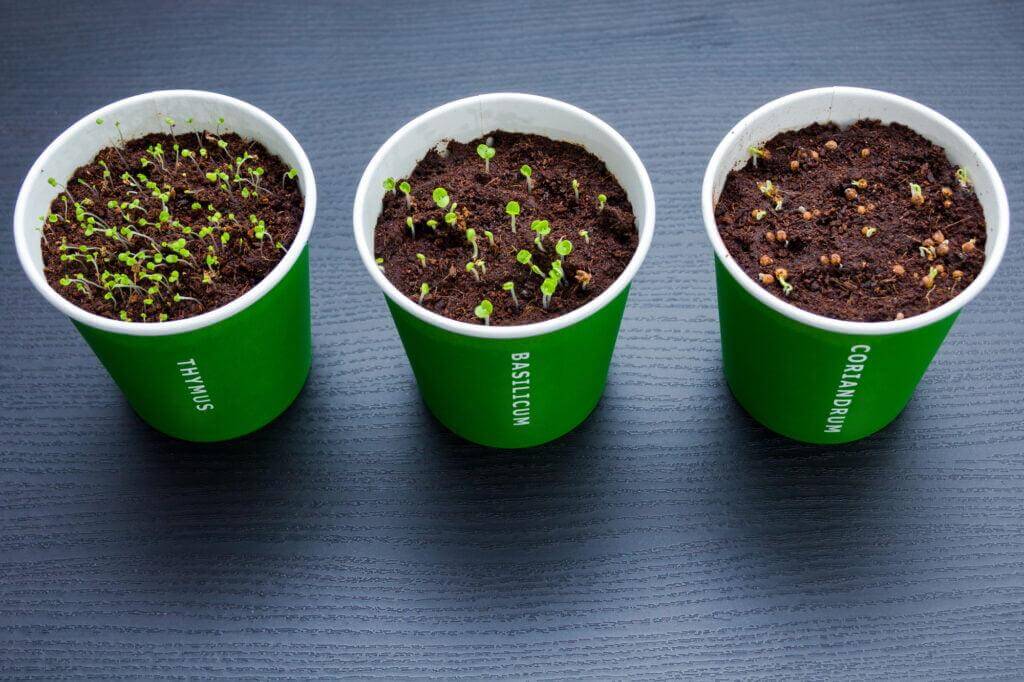
For those looking to cultivate an indoor herbal garden, a great way to start is with seedlings. Seedlings provide a head start compared to starting from scratch and can be easily attainable from local nurseries or even online.
Here’s a 5-step guide on how to start an indoor garden with seedlings:
- Choose the seeds that you would like to plant in your indoor garden. Consider factors such as plant size, sunlight requirements, water needs and their compatibility when sharing the same pot.
- Prepare your soil mix for your herb garden using quality soil.
- Add some water to ensure the soil is moist, but not too wet.
- Place your seeds in their compartments within the growing tray (either bought or DIY approach), lightly covering them with soil.
- Water again and place the tray under grow lights – it’s best practice once they sprout up about 10 cm tall or after about two weeks.
It’s important to note that each herb requires different watering, food and light pairing. Similarly during winter temperature gradients are likely to affect progress. Do enough research on the herbs you choose before planting them.
While following these steps mentioned and setting up your indoors primarily through making use of a growbar, which can help immensely in providing appropriate lighting for plants during colder months of the winter season, herbal garden ideas will come up naturally along the process.
Choosing the Right Container for Your Herb Garden
Choosing the Perfect Container for Your Indoor Herb Garden
The container you choose is crucial to the growth of your indoor herb garden. Here are six steps to choose the perfect one for your herbs:
- Size Matters: Select a container that is appropriate for the number of plants you want and the space you have.
- Drainage is Key: Always go for a container with drainage holes to prevent waterlogging and root rot.
- Material: Choose containers made of materials like plastic, terracotta, or clay that are breathable and will keep the soil moist.
- Consider the Sunlight: If your herb garden requires direct sunlight, choose a container that can be moved in and out of sunlight easily.
- Accessibility: Choose a container that makes it easy for you to care for your herbs, like a raised bed or window box.
- Aesthetic: Select a container that compliments your indoor space while being functional for your herbs.
Plant indoor herb gardens with these herbal garden ideas and herb gardening ideas to ensure their growth. It is important to have the right container when growing herbs in pots.
Did you know that indoor herb gardens have been around since ancient times? The Egyptians, Greeks, and Romans all grew herbs indoors for medicinal and culinary purposes.
Importance of drainage in herb pots
The proper maintenance of your indoor herbs heavily depends on the appropriate drainage in place. Insufficient drainage leads to waterlogging, which restricts oxygen supply to the roots leading to plant death. This issue can be prevented with a few important considerations.
Use containers with drainage holes or create them by drilling holes at the bottom of heavy pots. Also, add pebbles, sand or rocks at the bottom and modify soil density using perlite or vermiculite to ensure optimal water flow. Additionally, elevate pots using saucers or stands to avoid accumulation of stagnant water around the base area.
Apart from preventing plant death, adequate drainage also helps deter pest infestation as well as mold growth that degrades air quality. When selecting pots for your herb garden indoors, prioritize those with proper drainage since this seemingly minor aspect is key to maintaining healthy plants.
Lastly, don’t miss out on enjoying the benefits of an indoor herb garden. Implement these unique ways like setting up plant walls or repurposing household items like mason jars and wine bottles for functional and aesthetic herbal garden ideas that’ll take center stage in your home!
Creative container options for your indoor garden
Indoor herb gardens can be an excellent way to plant indoor and grow fresh herbs. To enhance the look of your indoor garden, you need to choose the right containers that fit both functionality and aesthetics.
Here are some creative container options for your indoor garden:
- Terrariums: Assembling a terrarium with small potted herb plants creates a low-maintenance and attractive mini garden.
- Mason Jars: These jars are perfect for growing small herb plants like thyme or mint on a windowsill in your kitchen.
- Hanging Baskets: They save space and provide an interesting focal point. You can hang them near sunny windows or along walls for a vertical herb garden.
- Wooden Boxes: These boxes not only look great but also provide excellent drainage. You can place them on shelves, windowsills, countertops or hanging racks
To add unique details to your indoor garden containers, decorate them with paint, stickers, stencils, or decoupage. Always remember to match the container size with your plant’s needs and consider the location where it will be placed.
Finding the Right Lighting for Your Herbs
When it comes to illuminating your indoor herb garden, finding the right lighting is essential. Adequate lighting is necessary for your herbs to photosynthesize and grow. But what kind of light should you use?
One option is using LED grow lights as they offer full spectrum light, which is similar to natural sunlight. They also consume less energy and have a longer lifespan compared to traditional light bulbs. Another option is natural sunlight, which provides your herbs with necessary vitamins and minerals. But be cautious because too much direct sunlight may scorch your plants.
In addition to lighting, consider the duration and intensity of the light. Most herbs need a minimum of six hours of sunlight or artificial light every day. To regulate the intensity, keep your light source 12-18 inches above your herbs.
To ensure your herbs receive enough light, rotate them once a week. If you do not have access to natural light, consider supplementing your LED lights with artificial light timers.
Importance of sunlight for herb growth
Natural light is the key to healthy herb growth, as it provides necessary spectrum and intensity for photosynthesis. Insufficient light can cause leggy, weak plants or even stunted growth. Ensure that herbs receive at least 6 hours of direct sunlight every day or use grow lights if natural light is inadequate.
Strive to keep herbs in optimal locations, such as south-facing windows, balconies or terraces with ample sun exposure. Keep in mind that temperature and humidity levels can affect herb growth, and it’s important to maintain a suitable environment as well. Rotate pots every few weeks to ensure even access to sunlight.
To increase your chances of successful indoor herb gardening, aim for full-spectrum bulbs that mimic natural light conditions. These LED or fluorescent bulbs emit the full visible spectrum of light and can be just as effective as sunlight. Make sure lights are positioned close enough to plants (4”-7” away) to prevent stretching but not close enough to burn leaves.
Mother Nature has provided us with weeds which are naturally grown herbs and easily found around us such as Dandelions which contain more vitamins than spinach and will give you a boost of energy when consumed raw in salads!
Maximizing exposure to natural light
To optimize the exposure of natural light for your indoor herb garden, position your plants close to a sun-facing window. Arrange them in such a way that each plant receives adequate light, ensuring that larger plants don’t overshadow smaller ones. Regularly rotate the location of each herb so that every part of the plant is exposed to sunlight.
To maximize sunlight, keep your windows clean and use reflective surfaces such as aluminum foil or mirrors. Consider investing in artificial lighting systems if your windows don’t allow sufficient natural light. Adjusting the intensity and duration of light can help replicate optimal growing conditions for different herbs.
Finally, remember to check that any shade-giving elements such as curtains or blinds are not obstructing the sunlight from reaching your herbs. Doing so will ensure they get an adequate amount of light necessary for healthy growth.
Supplementing with grow lights
When it comes to indoor herb gardening, supplementary lighting is often needed for optimal plant growth. Utilizing grow lights can provide the necessary light spectrum and intensity that herbs require to thrive indoors.
Here is a 4-step guide on how to effectively supplement with grow lights:
- Choose the correct type of grow light based on the needs of your specific herbs. LED lights are often recommended as they emit minimal heat and can be adjusted for varying spectrums.
- Position the grow lights approximately 12-18 inches away from your plants. The closer the light, the more intense it will be, which may damage your plant’s foliage.
- Set up a timer to ensure that your plants receive consistent lighting each day. Generally, herbs need around 14-16 hours of light per day, until they reach maturity.
- Monitor and adjust as needed. Check soil moisture levels and adjust the height or spectrum of your grow lights if you notice any issues with plant growth or foliage quality.
It is worth noting that different herbs have varying light requirements for optimal growth. For instance, basil needs bright but indirect light while thyme prefers direct sunlight. Proper research and understanding of individual herb’s needs are integral in successfully growing fresh herbs indoors.
Did you know that NASA has conducted studies on using LED lighting to grow plants in space? The technology used by astronauts was later adapted for use in horticulture industries on Earth.
Tips for Proper Watering and Harvesting of Your Herbs
Indoor Herb Gardens: Mastering the Art of Watering and Harvesting
Growing fresh herbs is a delightful activity that fills your home with the fragrance of nature. Proper watering and harvesting techniques ensure that your herbs stay healthy and thrive. Here’s how to do it in three easy steps:
- Water your herbs regularly: Most herbs require watering when the top inch of soil feels dry. Use a watering can or spray bottle to water gently and avoid splashing water onto the leaves. Ensure that your plants receive enough sunlight and airflow to prevent fungal diseases.
- Harvesting your herbs: Harvest your herbs regularly by snipping off the top few leaves or cuttings. Pinch off the leaves from the top of the stem to promote secondary growth. Cut a third of the stem length for woody herbs like rosemary and thyme. Always leave at least two-thirds of the plant to encourage new growth.
- Maintenance: Regularly prune your herbs and discard dead or yellowing leaves. Check for pests and diseases by inspecting the leaves and stems for any signs of discoloration or spots. Repot your plant when it outgrows its container or when the soil becomes too compact.
For optimal herb gardening, avoid overwatering or underwatering, as this can cause root rot or drying. Also, use soil that is well-draining and fertile. Finally, fertilize your plants every two to three weeks during the growing season to provide essential nutrients. Incorporate these tips into your indoor herb gardening routine for a thriving herb garden.
Maintaining consistent soil moisture
To maintain appropriate moisture levels in your indoor herb garden’s soil, you need to keep it consistent. The consistency of the soil’s moisture is crucial for healthy plant growth and longevity.
- Start by watering the herbs regularly. Too little water will leave the soil dry and cause the plants to dehydrate, whereas overwatering can lead to root rot.
- Regularly check the soil moisture levels with a moisture meter or by sticking your finger into the soil up to an inch. If the soil feels dry, water it thoroughly.
- Avoid letting pots sit in standing water as this can drown out roots and cause damage.
- If you live in a dry climate, consider adding pebbles and a small amount of water to the tray underneath your potted plants to increase humidity levels naturally.
- Mulch your herbs’ soil with organic matter to protect against evaporation and reduce soil temperature while retaining vital nutrients that are released during decomposition.
- Consider placing saucers beneath plant pots when using terra cotta or other porous materials as they release water through their pores leading to quicker evaporation rates.
It’s also important not to let your indoor herb garden become too dry or saturated with water. You must find the correct balance equalisation between under-watering and over-watering. These tips will help keep your herbs healthier for longer.
During summer days, ensure all herbs get enough sunlight by moving containers near windows or outdoors if suitable. Sunlight exposure is essential for any growth process of flora- photosynthesis fuelled them making their sources of energy from light.
Once I went abroad for two weeks whole year when my nephew took care of my indoor herb garden; he was enthusiastic about his new role and decided to surprise me by ensuring appropriately maintained consistent soils by over-watering all pots leading most plants perishing-except the hardier mint plant!
Proper techniques for harvesting herbs
Harvesting fresh herbs is about timely and gentle cutting of the plant that will ensure continuous growth. It’s essential to follow appropriate techniques for harvesting herbs to avoid damaging your plants or compromising their aromatic quality.
- Start by checking the maturity of your plant.
- Keep a sharp and clean pair of scissors.
- Avoid cutting leaves too low; make sure it’s above the node where new growth will emerge.
- Cut in the morning, before the heat rises, as this is when most flavors are concentrated in the leaves.
- Don’t cut more than one-third of a plant at once to maintain its vitality and healthy growth.
- Store harvested herbs in cool and dry places.
When storing your harvested herbs, it’s crucial to prevent moisture from developing as they can shorten the storage life and negatively impact their flavor.
It’s crucial not to harvest all your plants at once as this can put them into shock, which can lead to stunted growth or death.
Legend has it that ancient Egyptians regarded basil as a sacred herb, using it only in religious ceremonies or while embalming pharaohs. Centuries later, basil became widely used in Europe for cooking purposes with a reputation for curing headaches and improving digestion.
Transplanting and Renewing Your Indoor Herb Garden
Transferring and Refreshing Your Indoor Herb Garden
To successfully relocate and rejuvenate your indoor herb garden, follow these six simple steps:
- Determine the appropriate time to transplant your herbs – use any signs of nutrient deficiency or overcrowding as a guide.
- Identify a new pot with adequate drainage and provide fresh soil to nourish your herbs.
- Remove your herb from its original pot, taking great care not to damage the roots.
- Gently massage the roots to encourage new growth and spread them among the fresh soil in the new pot.
- Water your herbs adequately after transplanting, and provide regular care and observation for the first few weeks.
- Trim back any dead or damaged leaves to encourage new growth regularly.
Remember, choosing the appropriate pot size and re-potting schedule can also help keep your herb garden in good health.
To ensure the health of your herbs after transplantation, avoid overwatering and ensure adequate drainage. Additionally, an occasional application of organic fertilizer can greatly benefit their growth.
Knowing when to transplant your herbs
Transplanting is a crucial step in maintaining the health and vitality of your indoor herb garden. It’s important to know when exactly it is necessary to transplant your herbs for optimum growth and yields.
- Observe the Roots: Check if the roots are coming out from the bottom of the pot or have filled up the current container.
- Inspect foliage color: If leaves have yellowed or browned in large proportion, then it could indicate a lack or excess of nutrients rather than transpiration.
- Check plant appearance: If plants appear too lanky with thin stems, it might signify poor light. If lower leaves seem to fall off easily without force, then it might require more humidity.
- Consider pot size: If growing herbs indoors on a kitchen windowsill, repotting should occur every 6-8 months as soil quality shrinks over time.
After considering all these factors, follow a few steps before you transplant like cleaning & washing equipment thoroughly, preparing new soils well fertilized, watering the current planter 24 hours before transferring so that pulls out easier.
It’s important to note that each type of herb has unique needs regarding repotting- basil grows fast and needs constant pruning every 60 days while thyme requires more time to fill its container with roots and thus needs repotting only once a year.
Furthermore, over-watering can impede oxygen flow around the root mass and even lead to rot which eventually causes plant death- this is why using terracotta containers can significantly boost airflow while also absorbing excess water.
Moving herbs outdoors for the growing season
To acclimate your indoor herbs to outdoor conditions, it’s essential to gradually move them outdoors for the growing season. This process should be done slowly and cautiously to avoid shocking the plants and causing damage or even death.
Here is a six-step guide to help you transition your indoor herbs outdoors successfully:
- Start by exposing your herbs to sunlight outdoors for a few hours every day.
- Gradually increase the amount of time they spend outside each day over a period of two weeks.
- Check that they are getting enough water and adjust as necessary since the sun and wind can quickly dry herbs in containers.
- If temperatures suddenly drop below 50 degrees Fahrenheit at night, move your plants indoors temporarily.
- Leave them indoors overnight until they are ready again for an extended stay outside.
- Toward the end of those two weeks, allow them to spend entire days outside until they become acclimated entirely.
When moving your indoor herb garden outdoors, it’s vital to keep in mind that every plant will need different growing conditions. Some herbs prefer full sun while others thrive in partial shade; therefore, it is important before deciding on where you place each plant in your outdoor garden.
Lastly, remember that pests can present a significant problem when transitioning from indoor gardening outward because insects can easily access new plants without natural barriers, so make sure you keep an eye out. When bugs are too persistent, spraying diluted soapy water on affected foliage will only help clean them without damaging your produce.
Transferring your indoor herb garden outside provides an ideal way to add fresh flavors to all sorts of kitchen creations; with these tips, transitioning has never been easier!
Indoor herb garden ideas for every space and style
Indoor herb gardens can fit any space and style seamlessly. From small windowsills to room dividers, herb gardens can be grown in various styles. These gardens not only add aesthetic appeal but also provide fresh herbs for cooking.
- Vertical Herb Garden: Utilize wall space by planting herbs in vertical planters or hanging baskets.
- Mason Jar Garden: Repurpose mason jars by filling them with soil and growing herbs.
- Windowsill Garden: Perfect for small apartments, windowsills can hold a variety of herbs that receive natural light.
- Room Divider Garden: Convert a room divider into a herb garden while adding greenery and separation to your space.
Some indoor gardeners go the extra mile by adding an automatic watering system, providing the right nutrients, or installing grow lights for their plants.
Conclusion: Enjoying the Rewards of an Indoor Herb Garden
Indoor Herb Gardens: Savoring the Delightful Results
Growing fresh herbs in indoor herb gardens is a gratifying way to add flavor and aroma to your meals while being health-conscious. Fresh herbs are easy to grow indoors in small pots or containers. With a bit of care, you can grow an abundance of herbs year-round, providing a sustainable source of fresh herbs to use in your cooking.
To enjoy the rewards of an indoor herb garden, ensure that you use high-quality soil and provide proper light, temperature, and humidity. Watering your plants in moderation is crucial to prevent overhydration and other issues that can affect herb growth.
To maximize the benefits of your indoor herb garden, it’s important to choose the right types of herbs for your growing conditions and purpose. Consider your preferred use and taste when selecting herbs to grow. Additionally, herbs like basil, oregano, and thyme are easy to grow and require minimal maintenance.
A pro tip to keep in mind is to frequently harvest your herbs. Doing so promotes healthy foliage growth and encourages further growth. Plus, fresh herbs are perfect for use in many recipes, including pasta sauces, salads, and tea infusions.
5 Facts About Indoor Herb Gardens: Ultimate Guide to Growing Fresh Herbs:
- ✅ Indoor herb gardens provide fresh herbs all year round and are easy to grow. (Source: The Spruce)
- ✅ Using an indoor herb garden can save you money in the long run by reducing the need to purchase fresh herbs at the store. (Source: Epicurious)
- ✅ Growing herbs indoors can improve air quality and provide greenery in your home or apartment. (Source: HGTV)
- ✅ Some popular herbs for indoor gardens include basil, thyme, parsley, and mint. (Source: Better Homes & Gardens)
- ✅ Proper lighting and watering are essential for the success of an indoor herb garden. (Source: Gardener’s Supply Company)
FAQs about Indoor Herb Gardens: Ultimate Guide To Growing Fresh Herbs
1. What is an Indoor Herb Garden and How Can I Start One?
An indoor herb garden is a mini-garden where you can cultivate fresh herbs indoors, year-round, even when outdoor gardening is not possible. To start one, choose the appropriate space with ample sunlight, according to the herbs you plan to grow. You’ll also need soil, containers, and appropriate watering equipment.
2. What Are the Best Herbs to Grow Indoors?
The best herbs to grow indoors are those that require less sunlight and can grow well in containers. Some popular choices include basil, thyme, oregano, parsley, chives, and mint.
3. How Often Should I Water My Indoor Herb Garden?
The frequency of watering an indoor herb garden depends on various factors, such as the type of herb, the size of the pot, and the type of soil used. Generally, it’s better to water when the top layer of soil feels dry to touch, and avoid waterlogging the soil as it can invite fungal growth.
4. Can I Use Fertilizer for My Indoor Herb Garden?
Yes, you can use fertilizer for your indoor herb garden, but in moderation. For herbs that are grown solely for their leaves, such as basil or parsley, use a liquid fertilizer once a month or every 2 months. For herbs that are grown for their root system, such as ginger or turmeric, use the fertilizer sparingly.
5. How Can I Prevent Pest Infestations in My Indoor Herb Garden?
The best way to prevent pest infestations in your indoor herb garden is to maintain good hygiene practices. Make sure to regularly remove dead leaves, clean the containers, and keep difficult-to-reach areas clean. You can also use natural pest control methods such as neem oil or insecticidal soap.
6. What Are Some Creative Ways to Use Herbs from My Indoor Herb Garden?
The possibilities are endless! You can use fresh herbs to enhance the flavors of your dishes, make herbal teas, or create homemade herb-infused oils and vinegars. You can also use herbs for aromatherapy or create your own DIY herbal skincare products to improve your skin health.

